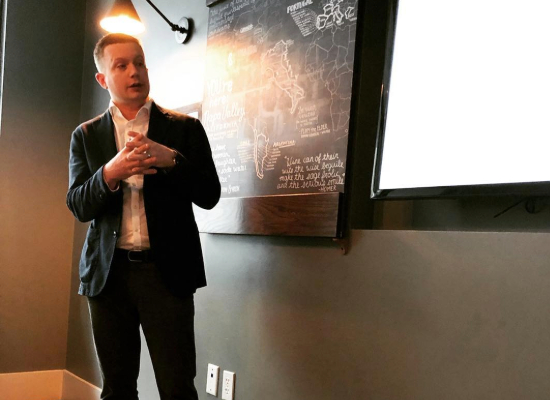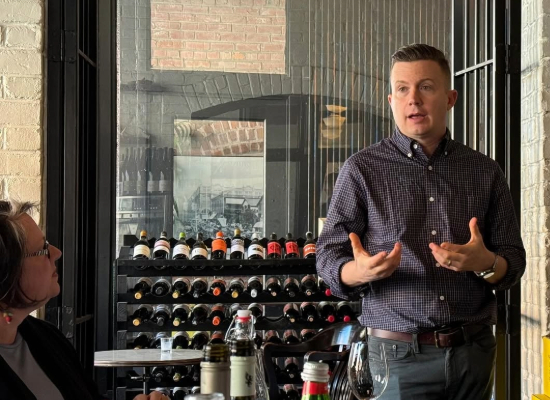Educating Sommeliers Worldwide.
By Beverage Trade Network

Master Sommelier Jesse Becker, one of the foremost experts on German wine and a Regional and Category Ambassador of the Sommeliers Choice Awards, shares his expert insights on boosting German wine sales in restaurants. In this interview with Sommelier Business, Becker MS discusses strategies sommeliers can use to elevate these wines through education, storytelling, and food pairings. He also delves into the importance of strategic wine list placement to capture guest interest and maximize sales. For any sommelier looking to expand their German wine offerings, his advice provides valuable tools to enhance guest experiences and promote these exceptional wines.
German wines are gaining traction in American restaurants, but they still occupy a niche space compared to wines from France, Italy, and domestic producers. A key factor in this underrepresentation is the widespread misunderstanding of Riesling, which continues to be misperceived by many wine drinkers. Additionally, awareness of German Pinot Noir is still in its early stages. To change this, I believe it’s important to give German Riesling and Pinot Noir more visibility on wine lists. While some sommeliers are already showcasing these wines, broader exposure and education are necessary to drive more recognition and interest.

Image: Jesse Becker MS educating the audience about Austrian wines (photo credits: Drew DiMatteo)
It’s a common misconception that German wine, particularly Riesling, is overly sweet. I often encounter this when pouring at consumer events and festivals—many people immediately dismiss it with a "no thanks, too sweet" as soon as they see the long, slender bottles. However, it's important to note that only one of Germany's thirteen wine regions, the Mosel, produces more off-dry and sweet wines than dry. In fact, dry wines are becoming increasingly representative of the German wine scene. To help shift perceptions, simply adding the word "dry" after the wine name on the menu can be an effective strategy to boost Riesling sales in restaurants. Educating guests on the variety of styles available is key to broadening their appreciation for this exceptional grape.
Also read: How Top Sommeliers Boost Beverage Sales And Enhance Guest Experiences
Beyond Riesling, there are several exciting German varieties that sommeliers should consider championing on their wine lists. German Pinot Noir, along with its cousins Pinot Meunier and Frühburgunder, is particularly noteworthy. These varieties were once planted because they ripened more reliably than Pinot Noir, but today, German Pinot is world-class, a significant shift from the past. There's also a growing interest in Silvaner, which is gaining attention for its versatility and unique expression. Additionally, German Pinot Blanc is making its way onto the U.S. market and deserves more recognition. These varieties all offer distinct characteristics and are well worth championing in order to highlight the diversity and quality of German wines.
[[relatedPurchasesItems-61]]
The Mosel may still lead the way in terms of sales potential in the U.S., but Rheinhessen is currently experiencing significant excitement. This region is home to many up-and-coming estates that are generating a lot of buzz. Rheinhessen produces some of Germany's most prestigious—and expensive—wines, but it also offers incredible value. A great example of this is young producers like Johannes and Franziska Gröhl from the renowned Roter Hang. Their wines are an excellent representation of the potential that Rheinhessen has to offer, and they’re definitely worth showcasing on a wine list.
When curating a selection of German wines for a restaurant list, one key factor to consider is the terminology used for varieties like Pinot Noir, which is also referred to as Spätburgunder in Germany. I often ask wineries which term they prefer, as sommeliers seem to be split—some prefer the German name, while others opt for the Burgundian term. Regardless of how you list these wines, I recommend creating a dedicated section on the wine list to highlight them. This not only draws attention to these unique offerings but also positions them as something new and different, helping to spark interest and curiosity among guests.

Image: Jesse Becker MS curating German and Austrian wines for The Italian Vine’s portfolio (photo credits: The Italian Vine)
To maximize visibility, I’d dedicate a page to different styles of Riesling and list German Pinot Noir as Spätburgunder. This approach highlights these wines and makes them easier for guests to explore.
Also read: Retaining Wine-Knowledge: Sommeliers and Wine Waiters in a Challenging Time
To engage guests, sommeliers should paint a vivid picture of the region. For example, when serving wine from Baden, I highlight its stunning green landscape, bordered by Alsace and the Black Forest. I also mention the historic Roman spa town of Baden-Baden. These details help connect the wine to its origins, evoking emotion and a deeper appreciation for its place of production.
I like to describe dry German Riesling as "electricity in a bottle." It’s a fun and memorable way to spark curiosity and convey the wine's vibrant, energetic character.
Sommeliers can make German wines an easier sell by pairing them with bold, flavorful dishes. For example, restaurants like San Francisco's Slanted Door and Las Vegas's Lotus of Siam have successfully paired Riesling with Vietnamese and Thai cuisine. I also enjoy experimenting with Riesling and red meat—chilled Thai beef salad with Riesling is a brilliant pairing that surprises guests and highlights the versatility of the wine.
Offering different formats like Bocksbeutal magnums and half-bottles can make German wines more appealing. A magnum of wine is impressive, and half bottles are a charming, approachable option for guests. These formats add variety and make the experience more memorable.
Enthusiasm is key. Train staff to show excitement about introducing guests to German wines and helping them discover something new. Also, offering assistance with pronunciation in a friendly, non-judgmental way can help build confidence and ease any hesitation.
Importers are increasingly taking risks with young, emerging producers in the German wine market. There’s also a shift toward modern, easy-to-understand labels, making the wines more accessible and appealing to a broader audience.
Header image sourced from WineCast Festival
Related Links
Elevating Careers Through the Glass: How Wine Festivals Shape the Future of Sommeliers
Mastering the Art of Wine Flights: A Guide to Curating Engaging Tasting Experiences